IT Leadership >> CAO 2.0
Do you know how to unleash the learning potential locked inside the technology your institution already has, or has yet to deploy? If not, here is solid advice from five tech-savvy chief academic officers.
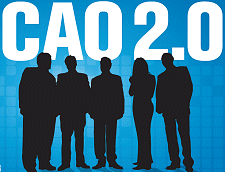 Most of the time, technology in the classroom is a “we” or “they” issue:
On one side are the people who deploy and operate the systems, on the other, the academics
and staffers who use them. But, typically, on both sides, everyone is so busy trying to
prepare for the next class or the next term that there’s little opportunity to ask what new
technologies are really adding to students’ education.
Most of the time, technology in the classroom is a “we” or “they” issue:
On one side are the people who deploy and operate the systems, on the other, the academics
and staffers who use them. But, typically, on both sides, everyone is so busy trying to
prepare for the next class or the next term that there’s little opportunity to ask what new
technologies are really adding to students’ education.
It’s an important question, and yet one that very few people on campus are in a good position
either to ask or to answer. The sole exception may be the one executive who is paid to
make sure students are learning all that they should be: the chief academic officer. But evaluating
the degree of success of an electronic learning program, and learning how to replicate
that success, requires a special kind of CAO—someone who understands curriculum
requirements and, at the same time, truly understands the technology and its potential.
Though even two or three decades into the Digital Age, there still aren’t all that many
chief academic officers who fit that description, we’ve found five who’ve earned the
respect of their colleagues (and in some cases, the recognition of their institutions) because
of the depth of their insight about technology. Take notes!
Marshall Goodman, VP and Campus Executive Officer
University of South Florida-Lakeland
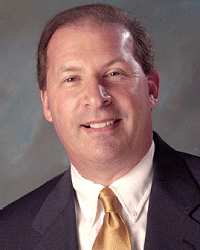
“Technology works best when it is
holistic, linked, and networked. But
that g'es against the architecture
upon
which today’s universities are built.”
– MARSHALL GOODMAN, VP & CAMPUS
EXECUTIVE OFFICER, USF-LAKELAND
Now trying to build a bold technology
program for the University of South
Florida-Lakeland, Marshall Goodman
served (until recently) as the provost of
the hometown college of the digital revolution—
San Jose State University (CA).
A political scientist by training, the USF
VP says he began working on quantitative
models back in the days of dual-floppy
drives, and maintains that technology
presents challenges for any provost.
“Huge challenges!” says the enthusiastic
Goodman. “Huge! Gigantic!”
Surprisingly, the problems tend to be
more managerial than technical, he
points out. “The hurdles are built within
the structure of a university, which is
highly decentralized. Yet technology
works best when it is holistic, linked,
and networked. But that g'es against the
architecture upon which today’s universities
are built, which is very much silos
and colleges and centers and fiefdoms,”
he explains.
At other schools in which he had been
involved before he moved to San Jose in
2000, drumming up support for electronic
initiatives was sometimes a problem.
But at San Jose State, given that the
30,000-student campus is reputed to
contribute more students to Silicon Valley
than any other school, professors
tended to be very enthusiastic about new
electronic programs.
“They knew from living in the region
that you had to be very flexible around
technology and—very much to their
credit—they were flexible. They were
also open to thinking in new out-of-thebox
ways about utilizing technology
both in the classroom as well as for the
running of the university,” Goodman
reflects. Many departments worked
closely with representatives of local
industry, he adds, including with such
market leaders as Apple and Hewlett-Packard, which provided support to help
ensure students’ technical skills were up
to speed. “It was very important for us
to give the students cutting-edge skills,”
he explains, “and the only way to do that
is to make sure you’re having very frequent
discussions with the industry
you’re trying to move students into.”
In fact, when it came to the utilization
of new technology, he says, the only problem
was with the faculty: The difficulty
was not so much in getting them to use
new technology as in getting them to keep
the amount of innovation under control.
“The challenge [at San Jose State] was
corralling it,” he says. “There were so
many different projects underway and so
many individuals innovating that it was
sometimes difficult to get our arms
around things, to ensure a safe and secure
environment.”
Still, Goodman tried to keep the
impulse to standardize within limits. Too
limited, he says, and the technology is no
longer solving all the problems it needs
to solve. Giving everyone on campus the
same computer d'esn’t make sense
either, he says, adding, “It’s as though
the IT department declares, ‘We’re
going to give everyone a hammer even
though 30 percent of people needed
screwdrivers.’ That causes morale problems
that come back to hurt you in the
end, and ultimately outweigh any cost
savings the school might have gained.”
Bryon Lee Grigsby, Provost and Chief Operating Officer
Centenary College
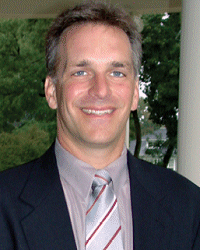
“At the heart of our tech effort is a
desire to replace traditional lecture-
format classes with interactive,
experiential courses that help
students learn better.”
– BRYON GRIGSBY, PROVOST
& COO, CENTENARY COLLEGE
An English medievalist might seem like
an unlikely champion of technology, but
Bryon Lee Grigsby says his interest
dates all the way back to his graduateschool
days at Loyola University Chicago.
His dissertation advisor was very
tech-savvy, he says, and in the early
’90s, the two worked together to produce
a game designed to teach students
about the Middle Ages.
These days, Grigsby is still working
on the technology edge, now as provost
and chief operating officer for Centenary
College (NJ). He says that at the
commuter college of about 2,000 students,
technology is already helping students with their careers (most students
attending Centenary work more than 35
hours a week) and helping them keep up
with their studies: Technology—especially
that used for online study—makes
it much easier for students to get to
classroom and study material when they
need it and not just when the campus
happens to be open.
At the heart of the college’s effort,
according to Grigsby, is a desire to
replace traditional lecture-format classes
with interactive, experiential courses that
help students learn better. “There’s pretty
overwhelming evidence that the lecture
format d'esn’t actually help the students
develop any skills,” he says.
To improve those outcomes, some
Centenary faculty are moving to courses
where technology makes the program
more interactive. “Our faculty is actively
engaged in moving to courses that have
high levels of student engagement in
them,” he says.
In the past five years, Grigsby explains,
the college has built interactive courses
sequenced to fulfill the requirements of
five complete degree programs. The
courses are designed to function online
without an instructor, he says, which
helps ensure that they are also clear and
useful in the conventional classroom. In
addition, they are designed to interlock
and reinforce each other, enhancing
learning for the students taking the
entire sequence of courses. Online programs
range from an associate’s degree
in liberal arts to an MBA. Developed
in Blackboard academic software, program assignments
revolve around real-world problems
and teamwork, says Grigsby. “This
is very different from throwing up a
PowerPoint presentation or doing a podcast
lecture,” Grigsby says.
Typically, the new interactive programs
are designed by a cross-functional
team that includes both a professor and
a technology expert. “The faculty member
is the content person,” he says, “but
there are others who know which [technology]
is best to engage students.” By
working together, he says, a professor
and an IT staffer are able to put together
a much more compelling course than
the faculty member could ever create
alone.
More such conversions are on the way,
according to Grigsby, who says that when
the conversion process began, 10 faculty
members were interested in working on
the project. In the past year, that number
has grown to 32 faculty members—over
50 percent of the faculty.
Next, Grigsby hopes to take the technology
even further. He’s interested, for
instance, in some experiments underway
now at MIT in which students are
given GPS-equipped handheld PDAs,
and then are sent out into the field to
solve engineering problems. Students
could, for example, show up at a professor’s
office, where they might be asked
to come up with a solution for a hypothetical
oil spill on campus, or to solve a
history-based mystery.
Scott McNall, Provost and Vice President for Academic Affairs
California State University-Chico
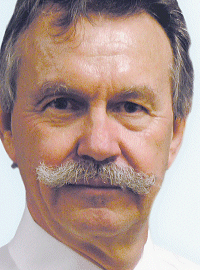
“Whenever a new technology is being
evaluated, we ask the same three questions:
‘D'es it work?’ ‘Will it help the students?’
and ‘Will it help the faculty?’”
– SCOTT MCNALL, PROVOST AND VICE PRESIDENT
OF
ACADEMIC AFFAIRS, CALIFORNIA STATE UNIVERSITY-CHICO
Scott McNall and his team at California
State University-Chico are way past the
“gee-whiz” stage of technology. These
days, when professors announce to
McNall’s technology team that they are
going to put their courses online, “we
don’t immediately tell them it’s a great
thing,” the provost confides. “We say,
‘Why would you want to do that?’”
It’s not that he is anti-technology;
McNall is reputed to be one of the more
tech-savvy CAOs in the state, if not the
country. But the former sociologist
explains that he has learned over time it’s
important that professors be very clear
about what they hope a particular technology
is going to do for their classes. So,
when he asks “Why?” he truly wants to
check out the motivation for the decision.
Then, to keep faculty on track as they
develop their online courses, McNall
reports that his team asks professors to
work with the Rubric for Online Instruction
(ROI), a set of guidelines for electronic
course development his staff has
developed. ROI “is based on the fundamental
assumption that technology d'es
not automatically allow you to teach a
better class or engage the students,” the
provost explains. Over and over again, his
team has found that new technology cannot
make up for bad teaching. “What we
learned is that good teaching is good
teaching, period,” he says. The same principles
of effective teaching that worked
before still work online, he adds, just in a
different way. In particular, he says, organization
still matters—perhaps even more
than it did when a class consisted of a
lone professor and a chalkboard.
Though on the surface his words could
be taken as “old school,” in reality,
McNall remains scientifically objective
as he evaluates classroom technologies.
“We’ve simply approached technology
more from an experimental point of view
than we have from a point of view which
would suggest that we know exactly what
we’re going to do,” he points out. To this
end, for the past nine years, McNall has
used a relatively small $150,000 annual
grant from the state to evaluate new technologies
within a particular section or
department. He says this has proven to be
a very effective way to conduct pilot projects
of new technologies without disrupting
the entire educational system.
Over time, the ongoing experimentation
has led McNall to the same three
questions, whenever a new technology is
being evaluated: “D'es it work? Will it
help the students? Will it help the faculty?”
After much experimentation with
the latest tools and technologies, he has
some advice he’d like to offer other
CAOs: Be very careful of approving proposals
to build complex virtual “learning
objects” such as 3D renderings of buildings
or human anatomy. “Don’t do it,” he
advises, “unless you’ve got a lot of
money to burn up.” He learned this lesson
from an ambitious project Chico conducted
a few years ago—a virtual recreation
of Chico’s Salisbury Cathedral, “an
absolutely wonderful learning object,” he
says. “You can watch the Cathedral being
built, and if you’re an architectural historian,
it’s absolutely superb.” But, there
was a downside: The project took thousands
of hours of programming time for
the staff. “Unless the project is one that
can be widely used across campus, or its
development is supported by other campuses,
you need to be really careful about
heading down that road,” McNall warns.
That’s especially true now that so
much good work has already been done
by publishing companies, he adds. “We
don’t need to invest in the creation of the
technologies; our investment needs to
be in faculty and staff development to
allow people to use the materials that
are already out there,” he explains.
5 TOP TAKEAWAYS OF TECH-SAVVY CAOS
- First decide what it is that you are trying
to achieve or accomplish. Don’t try to keep
up with technology for its own sake, says
Russell Willis, recently of Champlain College.
It’s surprising how many school technologists
and administrators forget this very simple rule.
- Don’t assume one size fits all. Always
recognize “how different the various parts
of a university can be,” advises Marshall
Goodman, USF-Lakeland (formerly of San
Jose State).
- Don’t bank on cost savings. According
to Scott McNall, CSU-Chico, “There are
efficiencies of scale that can be achieved in
selected classes but, generally, the technologies
require a greater investment of time
and resources.”
- Don’t demand converts. “What we try
to do is encourage the faculty to use technology
in the classroom, but by the same
token, we don’t demand it, because we
recognize that that’s not an appropriate
way to approach this issue,” says Joseph
McCormick II, Penn State-York.
- Cooperate with techies. Cross-functional
groups of professors and IT people can
develop much better courses than those
created in isolation, says Bryon Grigsby,
Centenary College.
Joseph McCormick II, Director of Academic Affairs
Penn State-York
Joseph McCormick is an unreformed
gadget guy. Since the mid 1980s, when a
colleague first plugged in an early PC, the
political scientist says that he has always
wanted the latest and greatest technology.
Yet that personal enthusiasm for whizbang
technology hasn’t led him to force
Penn State-York professors into his own
vision of the future.
“What we try to do is encourage the
faculty to use technology in the classroom,
but by the same token, we don’t
demand it, because we recognize that
that’s not an appropriate way to approach
the issue,” he explains.
McCormick believes that there will be
real cost savings for universities as technology
advances. Last year, for example,
the York campus overcame the lack of an organic chemistry instructor by broadcasting
the lectures of a Wilkes-Barre
professor’s lectures in a two-way, realtime
videoconference. But as aware as he
is of the potential of electronic learning
via videoconferences and online courses,
McCormick remains concerned about a
country in which the “digital divide” was
continuously addressed by ’90s policymakers,
yet isn’t much anymore. He says
he tries to remind professors that not all
of Penn State’s commuting students have
the ultra-high-speed connections that are
available on campus.
“We tell our instructors, ‘You have to
be sensitive to the fact that everybody in
your audience may not have the technology
at home for assignments, so be cautious
about how much work you ask your
students to do online,’” he says. The CAO
takeaway from this: Technology d'es not
exist in a vacuum; so, always take into
account who the targeted user is, in what
culture, and under what circumstances.
Russell Willis, Former Provost and Chief Academic Officer
Champlain College, Burlington, VT
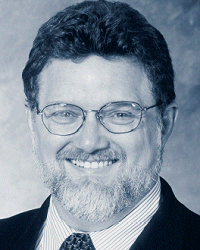
“The ongoing challenge for higher education is:
How can the pedagogy drive new product development?”
– RUSSELL WILLIS, FORMER PROVOST
& CAO,
CHAMPLAIN COLLEGE
For technology to be truly successful in
the classroom, says the college provost (in
transition as of this writing), it must be all
but transparent to the student and the
teacher. “If you’re doing it for technology’s
sake, then you’re probably not doing
the right thing,” Willis advises.
A former engineer who found his way
into administration after a stint at teaching
ethics and philosophy (including
social and ethical issues related to technology),
Willis d'es not believe campus
t e c h n o l o g y
should lead an
unexamined
life. Although
Champlain is
ahead of the technology curve in many
respects (undergraduates, for example,
can major in video game design), the
college tries to ensure that the purchase
and deployment of new technologies is
carefully examined before new products
and services are introduced on campus.
“The approach Champlain has taken
is not to continually push the envelope,
but to think of technology as a tool,”
Willis says.
Rather than trying to stay on the edge,
he explains, the school has tried to make
sure that technologies are rolled out in a
consistent way. For example, he says,
most “smart” classrooms on campus are
replicates of one another. Because of
that, “professors who get accustomed to
using a given technology in a routine
way know that they can use it in pretty
much any classroom setting they find
themselves in.”
That d'esn’t mean Willis is not personally
interested in “hot” technology; he
is. But “as a CAO, the biggest issue for
me is to get beyond my fascination with
technology and look at the quality of
instruction,” he says. “The ongoing challenge
for higher
education is:
How can the
pedagogy drive
new product
development? If we’re going to be using
the technology, how d'es higher education
steer some of this technological
development so that we’re not just accepting
that the technology is there to aid
learning?” One of the big questions for
higher ed now, in Willis’ view, is how to
push technological development so it’s
geared specifically toward learning and
not just adapted from another industry
application.
The limits are also being pushed at
Champlain. To wit: Using a variety of
communications tools, some classes
have created online projects that are
team efforts of the Burlington campus
and students at the college’s Mumbai,
India, campus. One recent undertaking:
a discussion among business students
on each campus, comparing advertising
in India and in the US.
Willis says he sees many exciting possibilities
ahead for technology in education,
particularly if the insights into the
learning process that some game developers
have found can be incorporated into
the curriculum through online games.
“Many games have a necessary teaching
aspect,” he explains. “They have to teach
you the rules; they have to teach you how
to manipulate the game; and I think some
of those games and game designers are
getting better and better at understanding
how people learn and then using that in
the technology.” And, he asks, “How
much better would higher education be if
that were an essential component of new
product development?”
WEBEXTRA :: Find the CIO perspective here.
About the Author
Bennett Voyles is a New-York based business and finance writer.